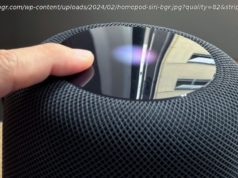Samsung’s Galaxy Fold is finally here — it’s the company’s first foldable smartphone, with three screens, six cameras, and a dual-cell battery. What’s it like to use? We spent some time with it to see how seamless it is switching between screens, and whether a foldable phone is worth buying.
Samsung’s first-ever foldable phone feels like it’s from the future, but also stuck in the past. The Galaxy Fold is packed to the brim with all the latest, and it works seamlessly — but the thick design and chunky bezels around the front reminds me the T-Mobile Sidekick.
That’s part of the trade-off that comes with a phone this different. It’s unlike any other, and it will drastically change the way you use your phone. Foldable phones will usher in a new world of multitasking on the go, and though its design isn’t perfect, Samsung’s first step is promising.
The Samsung Galaxy Fold has three screens. The first is what you see when you hold the phone folded up. It’s a small, 4.6-inch Super AMOLED screen (1,960 x 840), and it’s surrounded by thick bezels that make it look like its from 2008. Open the Fold up like a book, however, and you’re greeted to a sprawling 7.3-inch QXGA+ Dynamic AMOLED screen (2,152 x 1536).
The 7.3-inch screen is what steals the show. Samsung calls it an Infinity Flex display, made from bonded layers of polymer material. The company showed off a video of the phone undergoing stress testing more than 200,000 times to show how well the foldable screen works, and the dual-axis hinge design does not disappoint. Opening it is easy once you get a good grip on the edges, but snapping it shut is so much more satisfying — like hanging up a call on a flip phone.
The screen is beautiful. It does look laminated, and that’s because of the polymer material, which is what allows it to be folded. It doesn’t have a lot of glare, which is nice, but I haven’t tested the phone outdoors just yet. The screen on the front is a little harder to judge because it’s so small. It looks fine, but apps and other content can look squished — I quickly wanted to open the phone up to the 7.3-inch screen.
One of the biggest concerns with foldable screens is whether there will be a visible crease in the middle when the phone is fully open. The short answer is yes, there is a crease and yes, it’s obvious. The crease is distracting in a few full screen apps, and most noticeable when watching video. This is the feature I most want to examine more closely. It’s possible I’ll begin to ignore the crease after I’ve used the phone for a week, or it might begin to annoy. It’s too soon to tell.
When folded, the Fold more or less takes up the same length as the Galaxy S10 Plus, which I frequently carry. The thickness is noticeable, but I didn’t think about it. It will be a problem for those with small pockets, but that’s already true of many large smartphones.
There’s nothing but a camera on the back of the phone, and the side with the hinge is free of buttons. The hinge also hides away when you open up the phone. It’s on the other edge that you’ll find the power and volume rocker, as well as a fingerprint scanner not unlike the one on the Galaxy S10e. The scanner doubles as the Bixby button when pressed, and will call up Samsung’s virtual assistant.
There’s no fancy in-display fingerprint sensor like on the S10 or S10 Plus — which may be a good thing considering the issues many people are having with its reliability and accuracy.






